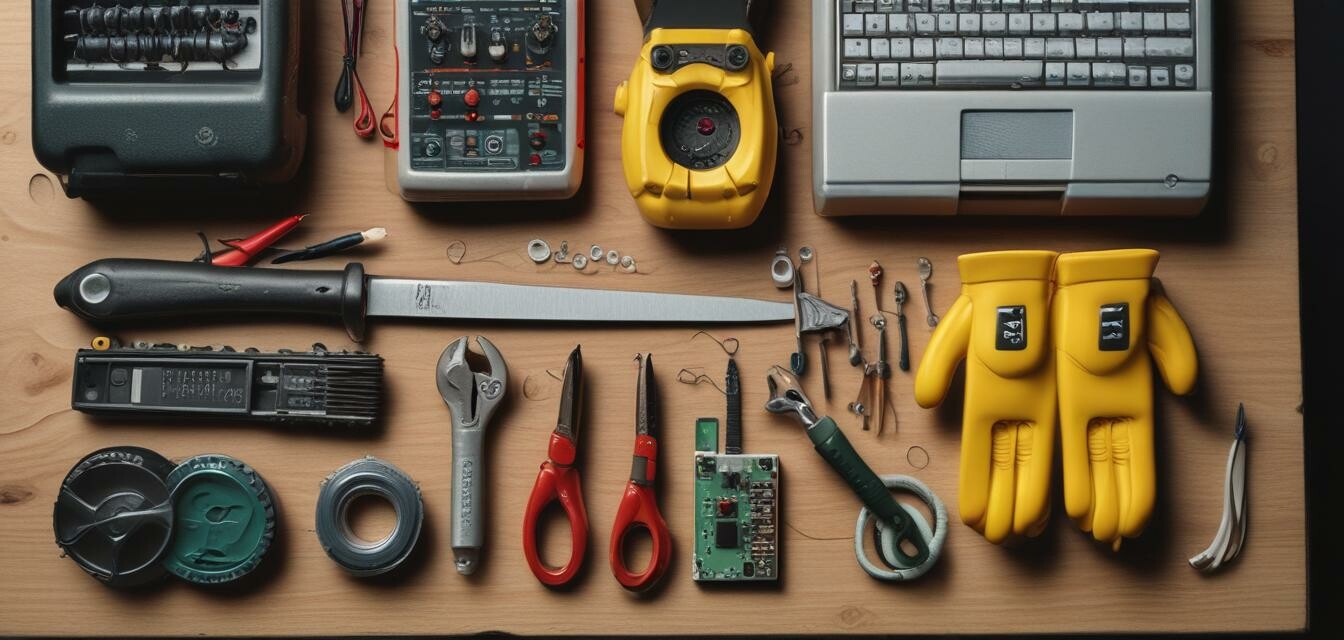
Best Practices for Wiring Safety
- Always use insulated tools while working with electrical wires.
- Wear appropriate personal protective equipment (PPE) such as gloves and goggles.
- Follow local electrical codes and regulations for safety.
- Utilize circuit testers to verify that circuits are de-energized before working.
- Keep your workspace organized and free from clutter to minimize risks.
Ensuring safety when working with electrical wiring is paramount for both professionals and DIY enthusiasts. Understanding the essential tools, techniques, and practices can significantly minimize hazards. This guide provides you with best practices for wiring safety, ensuring your projects are both effective and secure.
Understanding the Risks of Electrical Wiring
Electrical work poses significant risks if proper safety measures are not observed. Common hazards include:
- Electrical shocks
- Fires caused by faulty wiring
- Equipment damage due to short circuits
Essential Tools for Wiring Safety
Having the right tools is crucial for ensuring safety while working on electrical wiring. Here are some tools you should always have on hand:
| Tool | Description |
|---|---|
| Insulated screwdrivers | Designed to prevent electrical shock when working with live circuits. |
| Circuit tester | Helps ascertain whether a circuit is live before beginning work. |
| Voltage tester | Ensures there is no voltage present in a wire before handling. |
| Wire strippers | Safely strips insulation from wires without damaging the conductor. |
| Electrical gloves | Specialized for insulating against electrical currents. |
Techniques for Safe Wiring Practices
Employing safe techniques can mean the difference between a secure installation and a potential hazard. Here are best practices to follow:
- Use proper grounding techniques: Make sure all electrical devices and outlets are grounded properly to prevent electrical shock.
- Verify all circuits are de-energized: Always use a circuit tester before starting work.
- Keep the workspace organized: Minimize clutter to ensure safety tools are easily accessible.
- Follow local electrical codes: Adhering to regulations is necessary to ensure compliance and safety.
- Double-check your work: Before finishing up, verify that connections are secure and correctly made.
Personal Protective Equipment (PPE)
Wearing appropriate PPE is critical when working with electrical wiring. The following items should be considered:
- Electrical safety gloves
- Safety goggles
- Hard hats, if working in situations where falling objects are a risk
- Non-conductive shoes
Fires and Electrical Safety
Recognizing electrical fire hazards is important for preventing dangerous situations. A few fire prevention strategies include:
- Regularly inspecting and maintaining electrical systems
- Using surge protectors for sensitive equipment
- Not overloading electrical circuits
When to Call a Professional
While many electrical tasks can be performed by skilled DIYers, certain situations require the expertise of licensed electricians:
- Complex wiring installations
- Electrical panel upgrades
- Troubleshooting electrical systems
If you’re unsure about your wiring skills, it's best to reach out to a professional. Your safety and security should always come first.
Pros
- Increased safety through proper practices
- Enhanced reliability of electrical installations
- Fosters confidence in troubleshooting and repairs
Cons
- Requires time to learn regulations and troubleshoot
- Potential initial investment in tools and equipment
- Risk of injury if guidelines are not followed
Conclusion
Following best practices for wiring safety is essential for anyone involved in electrical work. By understanding the risks involved, utilizing the right tools, employing safe techniques, and knowing when to call professionals, you can significantly reduce hazards and ensure safety in your projects. Always remember, safety first!
Tips for Beginners
- Start with simple tasks to build confidence.
- Document your work to understand your progress.
- Seek guidance from experienced electricians or reputable resources.
For more information on tools and best practices, check out our comprehensive buying guides and tools and accessory kits to ensure you’re well-equipped for your projects.
Stay informed by visiting our News & Trends section for the latest news in electrical safety and standards.